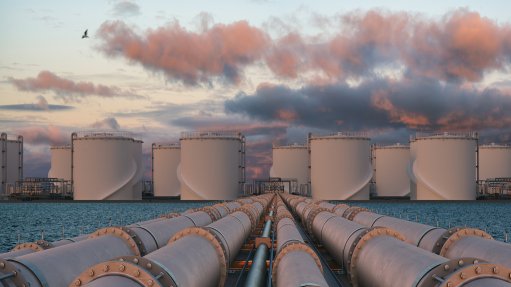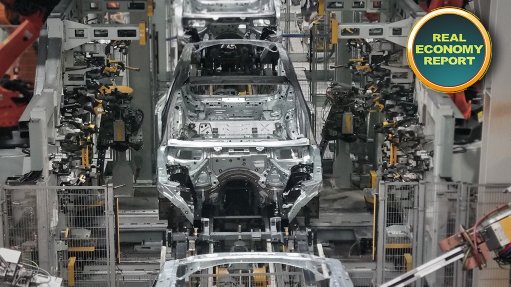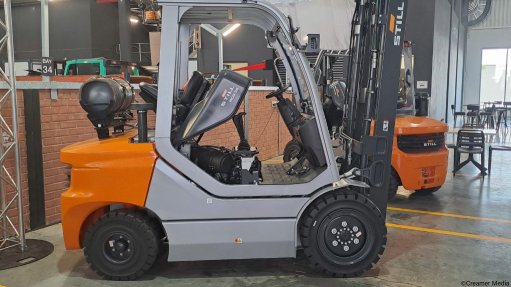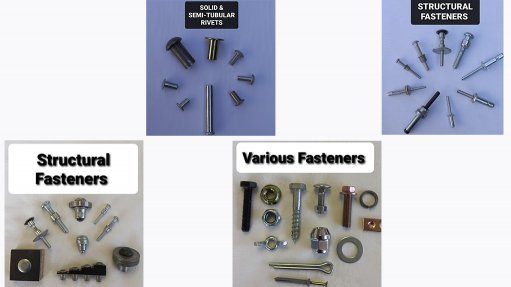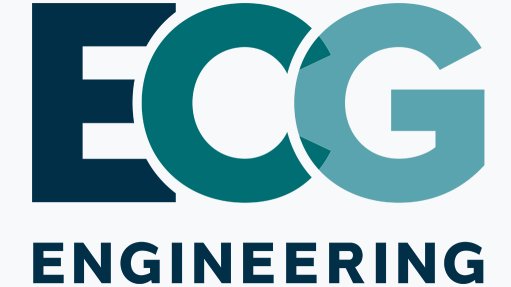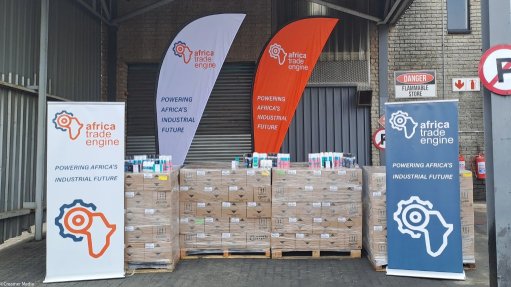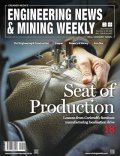Water reuse & recovery - a lifeline for SA’s mining sector
This article has been supplied.
With many of South Africa's mining sites located in water-scarce regions, efficient water reuse is becoming a question of survival for mines.
Efficient water reuse is a crucial strategy for survival and sustainable operations. The Water Research Commission (WRC) has highlighted this issue, emphasising the importance of water reuse schemes to address the country's projected water deficit.
Efficient water reuse and recovery could be a much-needed lifeline for South Africa’s mining sector, as water scarcity and infrastructure issues increasingly threaten productivity and revenues, say water sector experts who were speaking ahead of IFAT Africa - the leading conference and trade fair for water, sewage, refuse and recycling in Southern Africa.
Organised by Messe Muenchen India and Messe München GmbH, IFAT Africa will be co-located with analytica Lab Africa, the only trade fair for laboratory technology, analysis, biotechnology and diagnostics in South Africa, in Johannesburg July this year.
Advisory board members and exhibitors note that more effective water management has become crucial for the mining sector.
Lesego Gaegane, Senior Project Manager at the Water Research Commission (WRC), says: “As we look to IFAT Africa 2025, one thing is clear, water reuse is not only an environmental imperative but a business imperative. Industry must invest now in circular water systems that support sustainable growth, resource efficiency, and climate resilience. Research by the Water Research Commission has demonstrated that mine-impacted water, when treated to fit-for-use standards, can be safely reused, offering both economic and environmental returns. Passive treatment systems, modular reuse technologies, and real-time water quality monitoring are among the WRC-backed innovations enabling scalable reuse solutions.”
Drivers for change
ION Exchange CEO Gourish Chakravorty says water is a critical resource in the mining and mineral processing industries, serving essential functions such as ore processing, dust suppression, and refining. “These operations generate large volumes of contaminated wastewater, resulting from complex physico-chemical interactions between water, minerals, and processing chemicals. As a result, sustainable water management is imperative—not only to reduce reliance on freshwater resources but also to comply with increasingly stringent environmental regulations,” he says.
WEC Water Managing Director Wayne Taljaard adds: “Traditionally, much of the water used by mining activities ends up as waste. However, through innovative treatment technologies—including advanced filtration, sedimentation, and chemical dosing—this water can be reclaimed and safely reused in the process cycle. Recovered water not only meets operational requirements but also meets regulatory and sustainability targets. Recycling process water reduces freshwater intake, mitigates environmental discharge risks, and lowers costs associated with municipal water sourcing and wastewater disposal. For sites in water-stressed regions, it also provides a critical buffer against supply interruptions.
NuWater BD Specialist James Morisse says: “Water scarcity, coupled with tightening environmental regulations, is driving a vital transformation in mining and other water-intensive industries. Long recognised as major water users, these sectors now face growing pressure to reduce their environmental impact and improve operational resilience in a water-constrained world. Effective water management is no longer optional—it’s a cornerstone of sustainable progress.”
Innovation to drive efficient water management
NuWater’s Morisse says innovative technologies are at the heart of the shift mines need to make: “Advanced treatment methods such as reverse osmosis, membrane filtration, and electrodialysis are enabling the purification of varied water sources—including process streams, mine drainage, and tailings pond water—so they can be reused throughout operations. This closed-loop approach significantly reduces reliance on freshwater, easing stress on local ecosystems and ensuring greater water security, especially in drought-prone regions. The benefits are not only environmental. Water reuse delivers clear economic gains by lowering the costs of water procurement and discharge. By embracing these practices, mining and water-intensive operations enhance sustainability while improving long-term profitability.”
Hennie Pretorius, Technical Sales Specialist at Maskam Water says: “Water recovery and reuse at mines is prescribed by law and regulated according to the mine’s Water Use Licence from the Department of Water and Sanitation. This is also applicable to other industries. To improve ESG scores, it is imperative for the sector to make use of alternative water sources and reduce reliance on ground and municipal water supply. Onsite sewage treatment for water reuse addresses this challenge,.”
“Several mines and industrial sites are not only recovering their process water for reuse but also eliminating the use of conservancy tanks and septic tanks by utilising modular sewage treatment plants to treat sewage to DWS General Limits. Not all modular plants are created equal, so mines should consult experts to select a modular sewage treatment plant that can do complete Biological Nutrient Removal,” he says.
Ronald van Lochem, CEO at Aquadam Steel Tanks International, points to tank design as an important factor in water recovery and reuse for mines. “With increasing water scarcity and stricter discharge regulations, industries must implement systems that capture, store, and reuse process water reliably. New FBE (Fusion Bonded Epoxy) coated steel tanks offer a groundbreaking solution for this challenge. These tanks are designed to withstand the harsh chemical and abrasive conditions often found in mining and industrial water systems. The FBE coating provides superior corrosion resistance and extended tank lifespan, even in aggressive environments such as tailings water storage, process water recovery, and effluent holding.”
Low hanging fruit
Thomas Coetzee, Engineering Manager at Memcon, says the lowest hanging fruit for water recovery and recycling at mines is treating utility streams, such as acid from process streams. “Membrane technology can be used to recover water and unreacted acid from process streams, offering a powerful four-fold benefit. First, it significantly reduces the need for fresh water in acid make-up, since the bulk of the liquid involved is water. Second, by recovering and reusing acid, the consumption of expensive chemicals—often making up 70% of a process’s operating costs—is drastically reduced, leading to major savings. Third, it decreases the demand for neutralizing chemicals like lime. Fourth, it reduces the volume of high total dissolved solids (TDS) in effluent streams that must be treated and discharged, improving environmental compliance. This innovation supports positive outcomes in ESG performance, operating expenditure (OpEx), water footprint, and overall sustainability—especially critical in industries historically dependent on large volumes of water,” he says.
Coetzee says membrane plants are fully modular and custom-designed to the required scale, delivering strong ROI despite their higher upfront cost. For clients with CapEx constraints, Build-Own-Operate-and-Manage (BOOM) models offer a practical path forward.
ROIs on reuse
Carl Haycock, CEO of Talbot, notes that because mines use water so extensively in their processes, water outages can seriously impact operations. “If water supply is disrupted, production stops.
Because of the losses associated with lost productivity, and the rising cost of water, we have reached the inflection point for water recovery vs buying water,” he says.
“In Gauteng, parts of the North West and Free State provinces, many mines are water positive and they must continuously pump water out to keep the mines dry. That water can be treated and used. In addition, hundreds of megalitres of acid-bond drainage water is being treated, neutralised and essentially discharged into rivers. However, water can be recovered an infinite number of times. What stands in the way is the cost,” he says.
Haycock says: “With water recovered from mines, you've got suspended solids, rock flour, oils and greases from underground workings, nitrates, nitrites, E. Coli,, uranium, manganese, etc. But it is possible to treat this water to a potable standard, sometimes more cost effectively than buying it from a municipality, especially where you are using significant volumes.
WRC’s Gaegane says that financing remains a key barrier. However, models like Public-Private Partnerships (PPPs), Build-Operate-Transfer (BOT), and Build-Own-Operate-Transfer (BOOT) offer viable frameworks. She says: “An emerging frontier is resource recovery capturing hydrogen and critical minerals during treatment processes, turning waste into value. Still, challenges such as high upfront costs, inconsistent water quality, and complex regulations must be addressed through coordinated policy and strong cross-sector partnerships.”
Thabo Kabini, Senior Specialist: Water Infrastructure at IDC, says water reuse in mining and heavy industry offers significant economic, environmental, and operational benefits.
“Initial investments in water reuse systems such as treatment plants and advanced filtration technologies, can be high. However, these costs are often offset by long-term savings in water procurement and waste management. For instance, a water reuse facility at a platinum mine in South Africa achieved a payback period of less than four years, with a 50% reduction in potable water use.
Various financing models support water reuse projects. Blended financing, combining public and private funds, is common,” he says.
Kabini adds that programmes like the World Bank's Scaling Re-Water initiative help unlock financing by reducing investment risks and transaction costs. Additionally, public-private partnerships (PPPs) and green bonds are increasingly used to fund sustainable water infrastructure.
Decentralisation and PPPs
Tumelo Gopane, industry consultant and IFAT Africa advisory board member, says reused water from a properly managed wastewater treatment plant is cheaper than purified raw water.
To drive progress in water reuse, Gopane says: “Governments need to consider decentralising the provision of water and sanitation. This will require laws to be amended, regulatory authorities to be introduced to support competition and tariff setting, and allowing decentralised systems. This also means better defined compliance standards including personnel requirements, enhanced compliance monitoring with impactful consequences. A shift towards private sector participation in water and sanitation should also be considered. This means being more transparent regarding cross subsidisation, which cannot be avoided, considering that poorer communities will require to be subsidised if MDG 6 is to be attained. This will unlock blended finance in the form of grants and loans, and would unlock PPPs / Concessions in water and sanitation.”
Experts from various sectors will discuss the trends, challenges and solutions for Africa’s water, wastewater and refuse management sectors at IFAT Africa 2025. At this forum and exhibition, hundreds of stakeholders from around the world will come together to explore new and innovative products, expertise and technologies, and to consider solutions.
Article Enquiry
Email Article
Save Article
Feedback
To advertise email advertising@creamermedia.co.za or click here
Comments
Announcements
What's On
Subscribe to improve your user experience...
Option 1 (equivalent of R125 a month):
Receive a weekly copy of Creamer Media's Engineering News & Mining Weekly magazine
(print copy for those in South Africa and e-magazine for those outside of South Africa)
Receive daily email newsletters
Access to full search results
Access archive of magazine back copies
Access to Projects in Progress
Access to ONE Research Report of your choice in PDF format
Option 2 (equivalent of R375 a month):
All benefits from Option 1
PLUS
Access to Creamer Media's Research Channel Africa for ALL Research Reports, in PDF format, on various industrial and mining sectors
including Electricity; Water; Energy Transition; Hydrogen; Roads, Rail and Ports; Coal; Gold; Platinum; Battery Metals; etc.
Already a subscriber?
Forgotten your password?
Receive weekly copy of Creamer Media's Engineering News & Mining Weekly magazine (print copy for those in South Africa and e-magazine for those outside of South Africa)
➕
Recieve daily email newsletters
➕
Access to full search results
➕
Access archive of magazine back copies
➕
Access to Projects in Progress
➕
Access to ONE Research Report of your choice in PDF format
RESEARCH CHANNEL AFRICA
R4500 (equivalent of R375 a month)
SUBSCRIBEAll benefits from Option 1
➕
Access to Creamer Media's Research Channel Africa for ALL Research Reports on various industrial and mining sectors, in PDF format, including on:
Electricity
➕
Water
➕
Energy Transition
➕
Hydrogen
➕
Roads, Rail and Ports
➕
Coal
➕
Gold
➕
Platinum
➕
Battery Metals
➕
etc.
Receive all benefits from Option 1 or Option 2 delivered to numerous people at your company
➕
Multiple User names and Passwords for simultaneous log-ins
➕
Intranet integration access to all in your organisation






